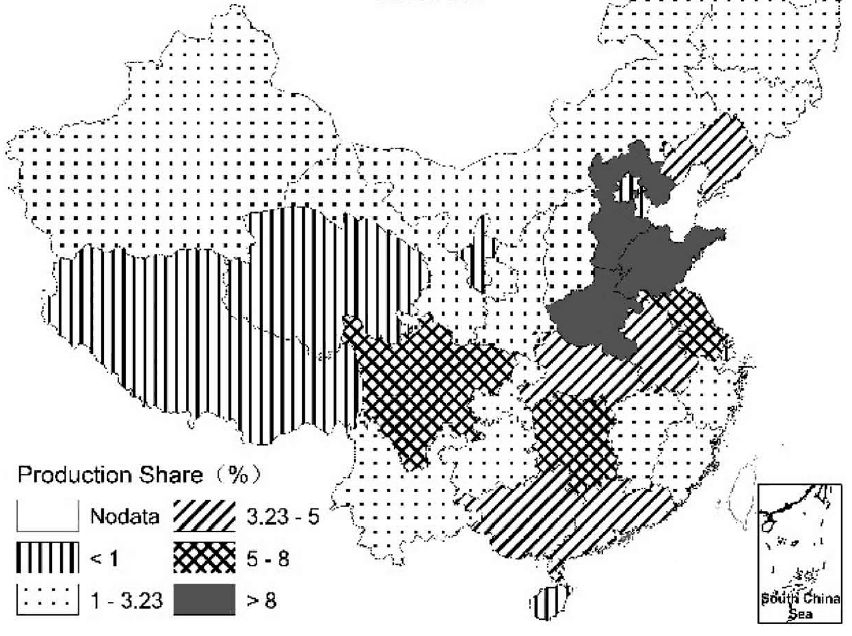Analyzing Spatiotemporal Changes of Vegetable Production in China
Abstract
Optimizing the distribution of vegetable production requires knowing where vegetables are currently produced and understanding the factors driving structural changes in vegetable production. Revised Gini coefficient and Moran’s Index are used to examine the spatial and temporal changes of vegetable production in China. A spatial Durbin model is applied to investigate the driving forces of these dynamic changes. The results show that: vegetable production in China has become more geographically concentrated in Huang-Huai-Hai region and Yangtze River Basin; Both comparative advantage and New Economic Geography-type mechanisms were drivers of the dynamic changes of vegetable production. Rural labor, road density (low-grade) and urban population growth have significant positive effects on vegetable production, while no significant effects of the climate factors are found. Furthermore, evidence of the existence of the spatial spillover effect was found in vegetable production. More specifically, rural labor and road density (low-grade) have positive externalities on vegetable production in neighboring provinces.
Long Ji, Liangzhi You, Linda See, Steffen Fritz, Chongguang Li, Shenyong Zhang & Gucheng Li (2018) Spatial and temporal changes of vegetable production in China, Journal of Land Use Science, 13:5, 494-507.
February 24, 2019
CGIAR-CSI





